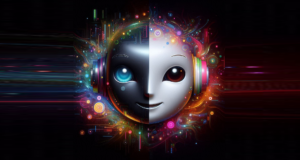Artificial Intelligence (AI) is an essential component in the future of work. To stay competitive and become a leader in your field, your organization will have to make bold moves toward digital transformation.
Of course, change is scary, especially when it means forging a new path into uncharted territory hoping to reach a new summit. It’s human nature. It’s also human nature to use excuses to avoid difficult changes that lead to real and lasting results. Think of any time you might have tried to shed some extra pounds. Maybe you said, “I don’t have time to go to the gym… I don’t know how to cook healthy food… I want to try the latest fad diet.”
Many of us are coming up with these types of excuses to put off the necessary steps or find shortcuts for meaningful digital transformation. If we’re going to reach new heights, we need to start by dispelling these common myths and move towards a “Phygital” transformation – blending physical and digital experiences to find solutions and inspire new innovations.
Myth #1: Digital is a magic bullet. Don’t fad diets always fail?
Solutions cannot be developed in a vacuum. They are not a simple matter of plug and play. A typical AI project can take six months or longer from idea to full scale deployment. It’s an incremental process that requires patience, the voice of the customer, and humans assisting along the way. It requires the 6 Ps – product, people, process, platform, purpose, and phygital – all working together to drive results.
Level set your expectations around speed and effort. Gradually, the small wins add up to more repeatable, scalable wins over time.
Myth #2: Digital means the elimination of physical.
Neither a purely physical world nor a purely digital world makes sense for a brand. Since we humans operate in the physical world, the physical will not go away in the future, but rather be enhanced by what we do digitally. Think of the two worlds working harmoniously or phyigitally.
Digital capability will enhance the quality of products, services, and our overall lifestyles. The refrigerators that will help you stay healthy by tracking what you have on hand, what is about to go bad, and what you need to buy — still needs to be manufactured and delivered.
From a quality of a life standpoint, we will live longer, cure diseases, harness renewable energy, and have more time for leisure. We can leverage the best of these different worlds as they fuse together.
Myth #3: Technology will take your job. History shows that technology creates more jobs than it destroys. The computer industry has led to a net gain of 10 million jobs in the United States over the last 50 years.
That’s not to say there won’t be growing pains. The reality is 25% of the current workforce may have to change occupations by 2030, and 32 million working class Americans are at risk for being left behind in the future of work.
Technology will change all of our roles over time. We all will need to level up our understanding of digital technologies and continuous learning of new knowledge and skills is now a fact of life. Resisting it will only set you back.
The key is to let the machines do the routines so humans can do what we do best – common sense, empathy, design thinking, customer service – to create epic products and customer experiences. Humans will ultimately create value for our companies and society at large. And that potential value is huge! Imagine the global GDP going up by $15.7 trillion by 2030 and market size increasing by $1.3 trillion.
Myth #4: Digital requires the ability to code. If you can’t code, you will be left behind.
It’s easy to assume that you’ll need hard-core computer programming skills if you want to contribute in the digital terrain and stay employed. It’s simply not true. There’s been a gradual trend towards the democratization of software whereby users share data and software more openly. Now a days, technology has evolved to be even more user-friendly. You can become tech savvy!
Even irrespective of coding, though, we’ll need non-technical professionals to perform research, education, programmatic or process-related tasks to build out products and services. We need interdisciplinary thinking by technical and non-technical people to shape the AI future of work.
Myth #5: Digital does not apply to me.
Spoiler alert: Whether or not it’s in your job description, phygital products and services are here to stay. Just ask Siri, your digital assistant!
When you need to get to work, your phone is likely accessing AI systems run by a mapping company that has access to vast crowd-sourced data. Getting to work doesn’t feel like tech — but is highly dependent on digital transformation.
What’s the bottom line?
Digital transformation is happening all around us and at a rapid pace. You and your company cannot succeed without acknowledging and leveraging its potential. Everyone plays a role in this. You already do! We need the business expert at the table alongside the data scientist, the engineer, the lawyer, the product manager, and many others to bring what’s never been done before to life.
So let’s stop believing these myths, and let’s get to work! There is a whole new phygital frontier awaiting us.
This blog accompanies a presentation — “The Future is Phygital” — given by Nicole M. Sroka and Dr. James G. Shanahan at ACMP’s CHG MGMT: Global Connect 2022 event on June 29, 2022. This post will be the first in a series to help you navigate the new Phygital frontier.
James is the CEO, Cofounder of Church and Duncan Group Inc, and Nicole is the Founder and Lead Consultant of Mind Moves LLC. Together, they make up both the technical and people side of change needed for digital transformation towards an Artificial Intelligence future of work.





